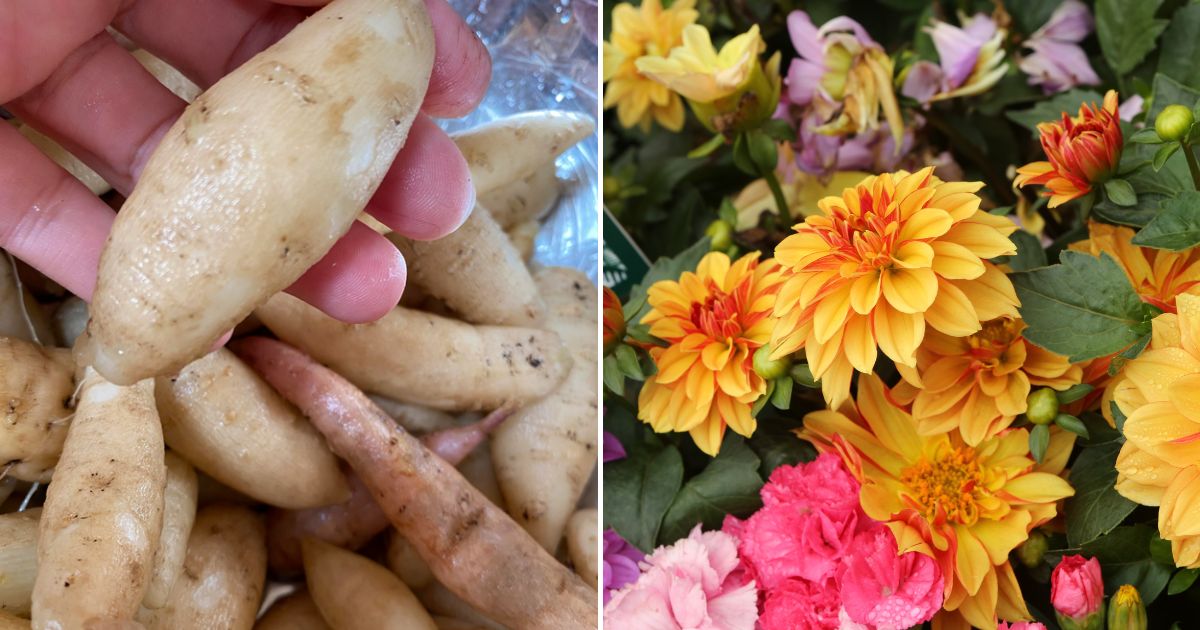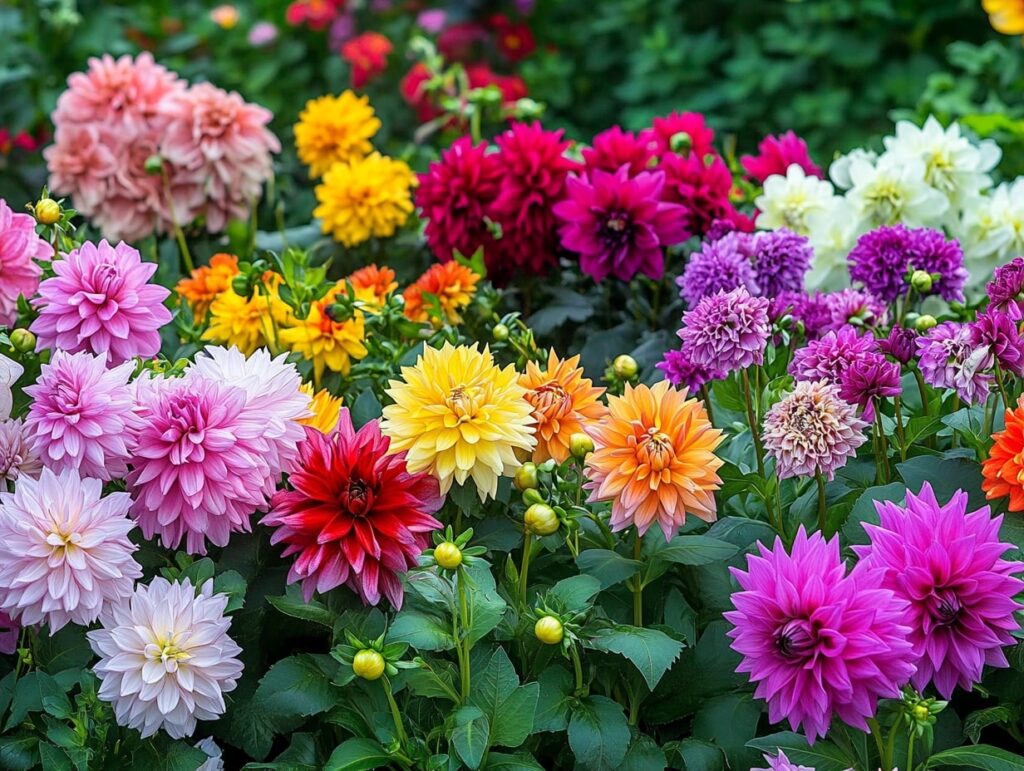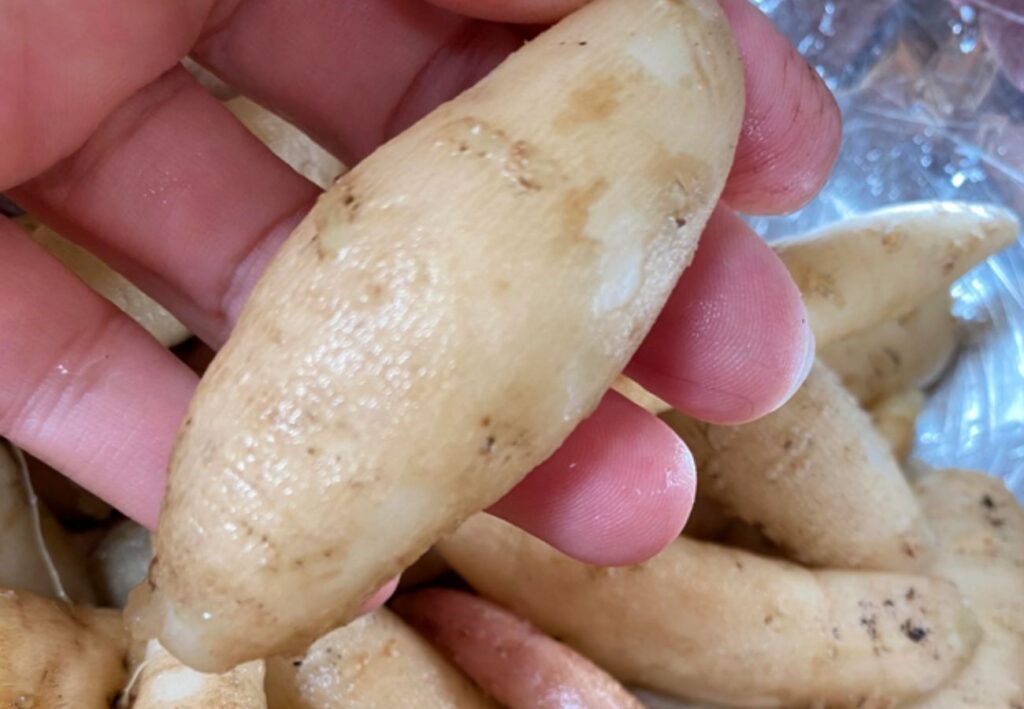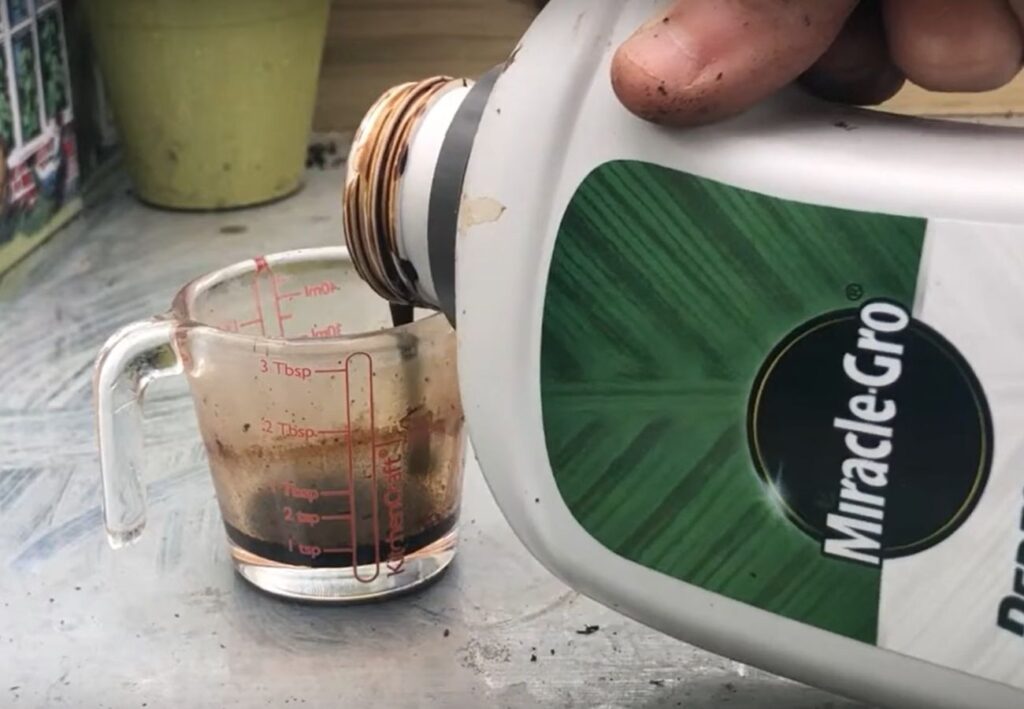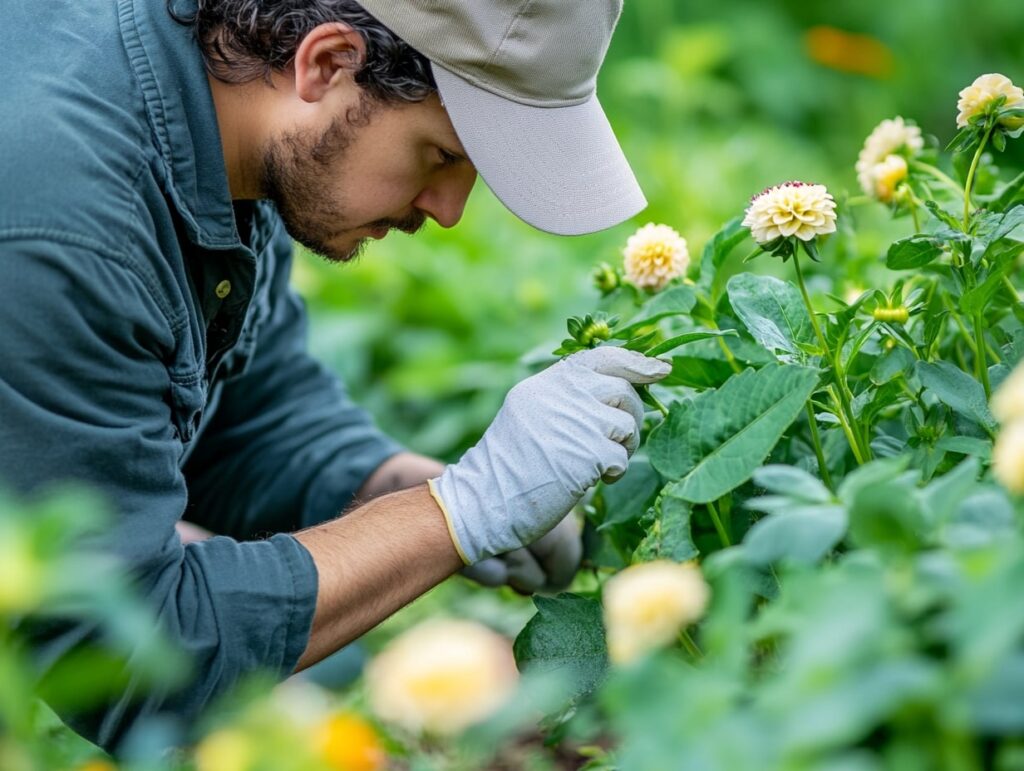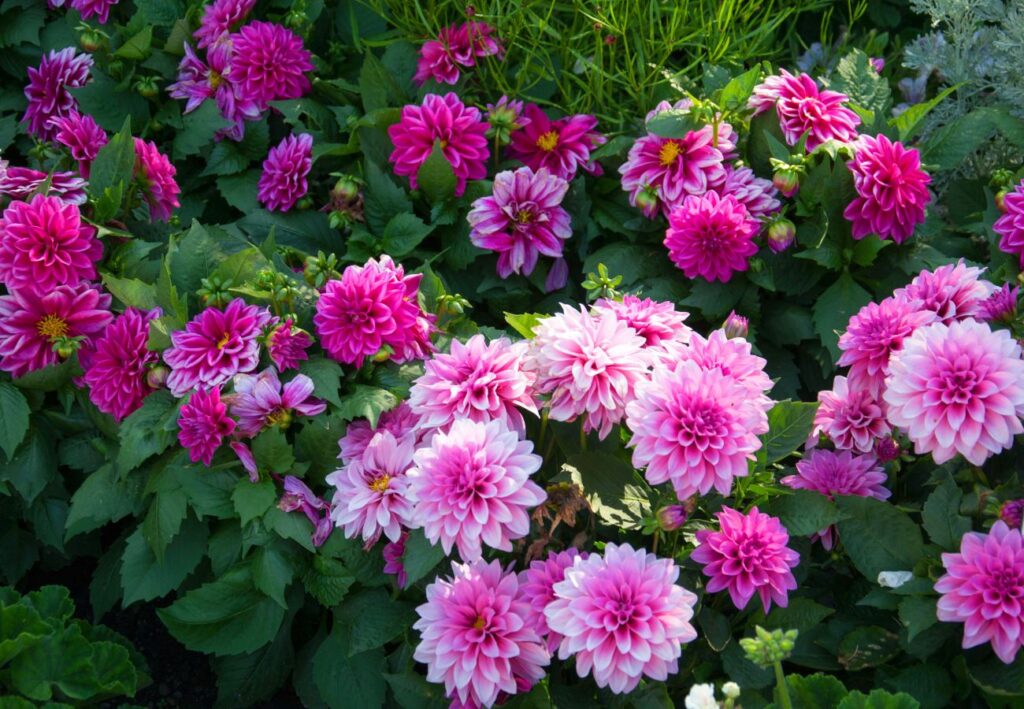Imagine walking through a garden alive with a dazzling display of colors, where every bloom seems to outshine the last. If this sounds like a dream, then dahlias might be the perfect addition to your garden.
These spectacular flowers, known for their variety and vibrancy, can transform any landscape into a picturesque paradise. And the best part? Growing them is easier than you think.
Intrigued by the idea of creating a floral masterpiece? With the right tips—from selecting the best tubers to mastering planting techniques—you’ll soon have a garden that’s not only stunning but also a testament to your gardening skills.
Get ready to impress your neighbors with a garden full of lush, colorful dahlias.
Growing dahlias successfully involves more than just basic planting and watering. Light conditions, soil quality, and pest control are key factors in ensuring these beauties thrive.
But don’t fret—with some practical advice, you can keep your dahlias healthy and vibrant all season long, making your garden a true showstopper.
Getting to Know Dahlias
Dahlias are beloved for their vibrant colors and stunning blooms. Learning about their history, varieties, and classifications will enrich your gardening experience.
History and Origin
Dahlias originated in Central America, particularly in Mexico and Guatemala. They were first recorded in the 16th century when Spanish explorers encountered them. Initially, dahlias were cultivated for their edible tubers, similar to potatoes.
By the 18th century, they made their way to Europe, where botanists and gardeners admired their ornamental value. Today, dahlias are cherished worldwide for their diverse shapes, sizes, and colors.
Popular Varieties
Dahlia varieties are vast and offer something for every garden. Some popular types include Pompon Dahlias, known for their globe-shaped flowers, Cactus Dahlias with their spiky petals, and Dinnerplate Dahlias that boast large, dramatic blooms.
Another favorite is the Collarette Dahlia, characterized by a single row of flat petals with a contrasting collar. Each variety brings unique charm and elegance to your landscape.
Understanding Dahlia Classifications
Dahlias are classified based on flower form, size, and petal arrangement. The American Dahlia Society recognizes 14 different forms, including Ball, Peony-flowered, and Waterlily.
Size categories range from Giant (over 10 inches in diameter) to Miniature (under 2 inches).
Petal arrangements vary, providing endless possibilities for your garden’s aesthetic. Familiarizing yourself with these classifications will help you select the perfect dahlias for your space.
Starting Your Dahlias Right
To ensure the best start for your dahlias, you need to focus on selecting the right tubers, preparing the soil adequately, and employing proper planting techniques. Each of these steps plays a critical role in the successful growth and health of your dahlia plants.
Choosing the Right Tubers
Selecting healthy tubers is crucial for a strong start. Look for tubers that are firm and blemish-free. They should have at least one “eye,” which looks like a small bump or sprout—this is where the plant will grow from.
Avoid tubers that are soft, moldy, or have no visible eyes, as these may not grow well.
Consider the dahlia variety you want—different varieties offer various colors, heights, and bloom types. Label your tubers if you have multiple varieties to keep them organized. Buying from a reputable supplier can ensure quality tubers that are disease-free.
Soil Preparation and Requirements
Dahlias thrive in well-draining soil rich in organic matter. Amend your soil with compost or well-rotted manure to enhance fertility and drainage. Aim for a slightly acidic to neutral pH, around 6.5 to 7.0. Conduct a soil test to determine if any adjustments are necessary.
Loose soil is essential. Dig to a depth of about 12 inches to aerate and break up compacted areas. Adding some sand can improve drainage if your soil is heavy clay. Poor drainage can lead to tuber rot, so ensure water can flow freely through the soil.
Planting Tips for Healthy Growth
Space your tubers about 18 to 24 inches apart to allow enough room for growth and air circulation. Dig a hole 6 to 8 inches deep, place the tuber in with the eye facing up, and cover with 2 to 3 inches of soil. As stems grow, you can continue to fill in the hole.
Water sparingly at first to avoid rotting the tubers. Once sprouts appear, increase watering to maintain consistent moisture, avoiding waterlogging. Adding a mulch layer can help retain soil moisture and suppress weeds.
Stake your dahlias early to support tall growth and prevent wind damage. Use soft ties to avoid damaging stems. Frequent deadheading will encourage continuous blooms and keep your plants healthy.
Maintaining Your Dahlias
Proper care ensures that your dahlias thrive and produce beautiful blooms. This involves diligent watering, balanced fertilization, precise pruning, and vigilant pest management.
Watering Practices
Dahlias need consistent watering to flourish. Water them deeply 2-3 times a week, ensuring the soil is moist but not waterlogged. Use a soaker hose or drip irrigation to deliver water directly to the roots, minimizing leaf wetness to prevent fungal issues.
Monitor soil moisture by sticking your finger into the soil. Water when the top inch feels dry. In hotter climates, you may need to water more often.
It’s crucial to water dahlias in the morning. This allows the leaves to dry out during the day, reducing the risk of mold and mildew.
Fertilization and Nutrition
Dahlias benefit from regular feeding. Start with a balanced 10-10-10 fertilizer during planting. Once dahlias start to grow, switch to a high-potassium fertilizer (like 5-10-10) every 3-4 weeks to promote flowering.
Apply fertilizer evenly around the plant and water it in thoroughly. Avoid getting fertilizer directly on the leaves or stem to prevent burn.
Mulch around the base with organic matter like compost or well-rotted manure. This helps retain moisture and provides a slow-release source of nutrients.
Pruning and Deadheading
Pruning and deadheading dahlias encourage growth and extended blooming. Regularly remove faded flowers (deadhead) to redirect energy to new blooms. Use clean, sharp scissors or pruning shears.
For bushier plants, pinch off the top growth when dahlias reach about 12 inches. This encourages side shoots and more blooms.
Cut vibrant flowers to enjoy indoors. This also promotes new flower growth. Remove any weak or spent stems to maintain plant health and appearance.
Pest and Disease Management
Common dahlia pests include aphids, spider mites, and slugs. Inspect your plants regularly and use insecticidal soap or neem oil to control infestations. Handpick slugs in the early morning or set up slug traps.
To prevent diseases like powdery mildew and botrytis, ensure good air circulation around plants. Space dahlias adequately and remove any diseased foliage promptly.
Rotate planting locations annually. This reduces soil-borne diseases. Clean up plant debris in the fall and properly store tubers to avoid winter rot.
Maximizing Bloom Performance
For spectacular dahlias, focus on proper staking, promoting healthy blooms, and managing weather impacts. Adopting these practices will ensure you get the most out of your dahlia plants.
Staking and Support
Dahlias are top-heavy and benefit from strong support. Use bamboo stakes, metal rods, or wooden stakes to provide stability. Insert the stakes into the ground when you plant the dahlias to avoid damaging the roots later.
Tie the main stem to the stake with soft garden ties or string to prevent snapping. Space out your ties every 12 inches along the stem.
This ensures the plant grows upright and receives adequate sunlight and air circulation. Regularly check and adjust the ties as the plants grow.
Encouraging Blooms
To maximize blooms, remove spent flowers promptly. This process, known as deadheading, encourages the plant to produce new blooms rather than seeds. Pinch or cut off the spent blooms at the base of the stem.
Feed your dahlias every 2-4 weeks during the growing season with a balanced, water-soluble fertilizer. Opt for one with a nutrient ratio such as 10-10-10 or 20-20-20 for healthy growth and vibrant flowers.
Prune the side shoots to focus the plant’s energy on larger blooms. When the main stem reaches about 12 inches tall, pinch out the top to encourage bushier growth.
Dealing With Weather Challenges
Dahlias can be sensitive to extreme weather. During hot, dry spells, water deeply but infrequently to encourage deep root growth. Aim to water in the early morning to minimize evaporation and reduce the risk of diseases.
If heavy rain or strong winds are expected, secure your plants further with twine or additional staking. Protect your dahlias from unexpected frost by covering them with frost cloths or horticultural fleece.
Monitor for signs of weather stress such as wilting, yellowing leaves, or poor bloom quality. Adjust your care routines accordingly to maintain healthy plants during challenging conditions.
End-of-Season Care
As the growing season winds down, it becomes essential to focus on proper care techniques to ensure your dahlias thrive next year. Attention to digging, storing tubers, and preparing the plants for winter is critical for their long-term health.
Digging and Storing Tubers
Begin by gently digging up the tubers after the first frost blackens the foliage. Use a garden fork to avoid damaging the tubers. Carefully lift them from the ground, shake off excess soil, and allow them to dry for a day or two in a shaded, ventilated area.
Once dry, trim the stems back to about 2-4 inches above the tuber. Any damaged or rotten tubers should be discarded to prevent disease from spreading. Label each tuber variety before storing them.
Store the tubers in a cool, dark place with regular temperatures between 40-50°F (4-10°C). Check periodically to ensure they stay healthy and discard any that show signs of rot.
Preparing Dahlias for Winter
After digging up the tubers, give your garden beds a good cleaning. Remove leftover plant debris to prevent pests and diseases from overwintering. Mulch the beds with a thick layer of leaves, straw, or compost to protect the soil.
If you live in a milder climate, you can leave dahlias in the ground. Cut the stems down to about 4 inches and cover the area with mulch to insulate against cold temperatures. Keep an eye on the mulch level throughout winter and replenish as needed.
For potted dahlias, bring the pots indoors to a frost-free location. Water sparingly during winter, keeping the soil just barely moist. Check for any signs of pests or diseases and act promptly if you notice any issues.
Incorporating dahlias into your garden is like adding strokes of vibrant color to a canvas. With their rich history and an array of stunning varieties, these flowers can elevate your outdoor space into a visual delight.
By carefully selecting tubers, ensuring proper soil preparation, and providing consistent care, you can cultivate a breathtaking display that blooms all season long.
As you nurture these beautiful plants, your garden will not only become a place of tranquility and beauty but also a testament to your gardening prowess.
So, dive in, explore the wonders of dahlias, and let your garden flourish with their timeless charm.
